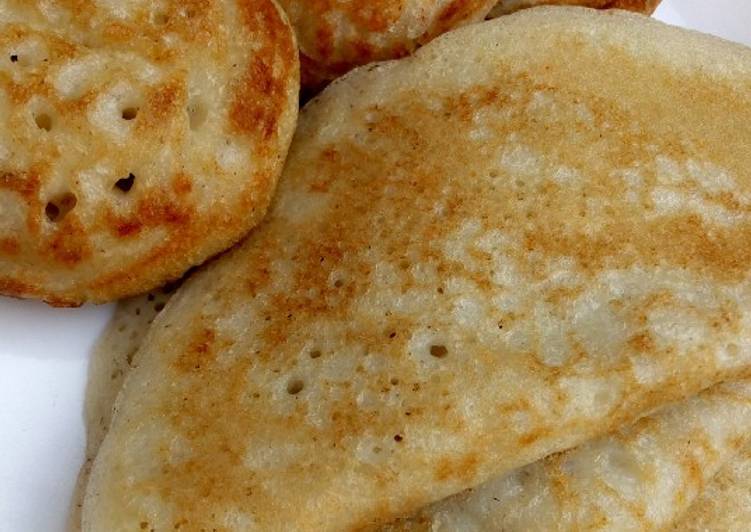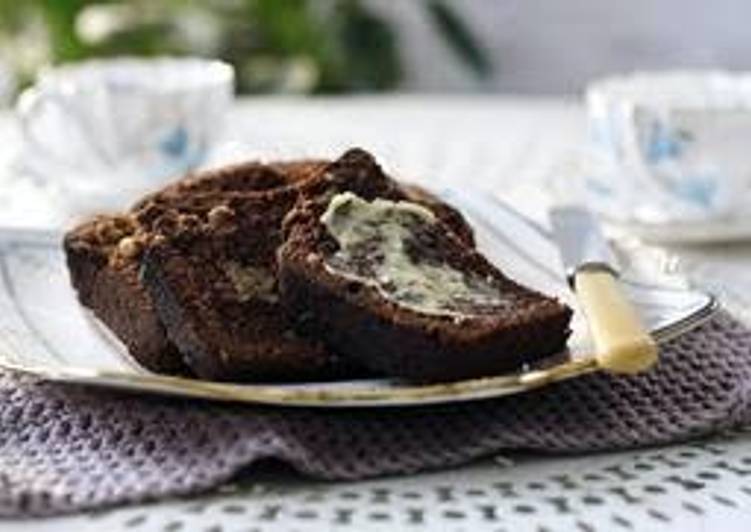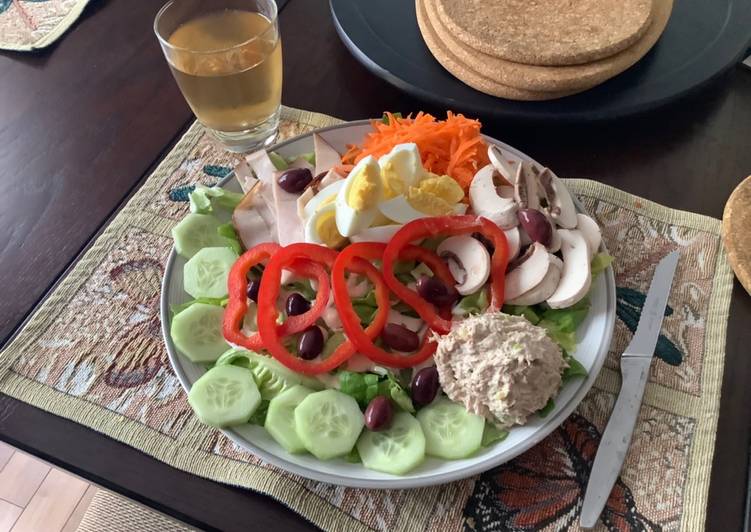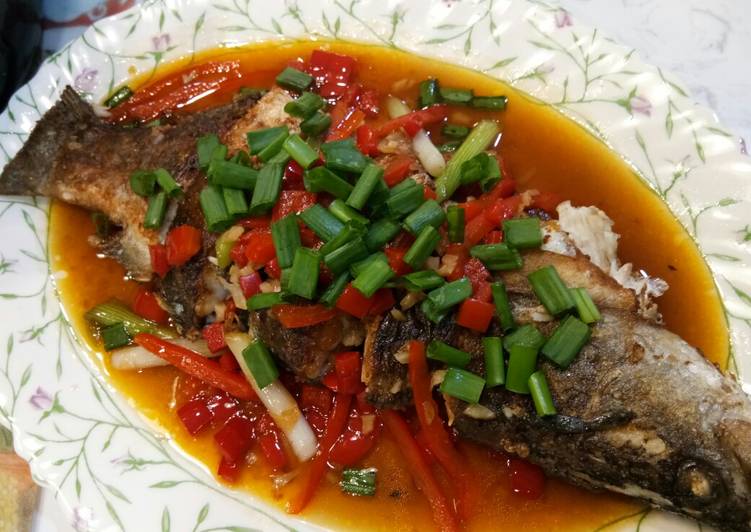Recipe of Perfect Crushed, Stir-Fried and Simmered Konnyaku
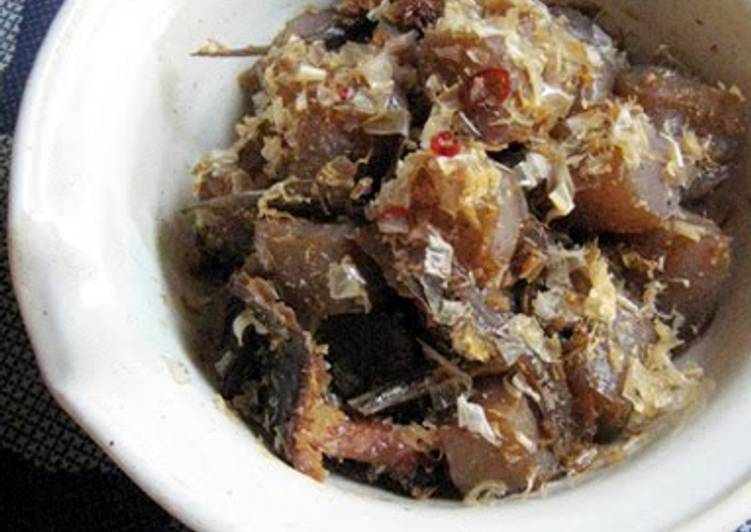
Hello everybody, I hope you are having an amazing day. Today I will show you how to make a special dish, Crushed, Stir-Fried and Simmered Konnyaku. It is one of my favourite food recipe, this time i’am gonna make it a little bit tasty. This is gonna smell and look delicious.
Crushed, Stir-Fried and Simmered Konnyaku Recipe. Konnyaku is as close to zero-calorie food you'll find—the majority of the gelatinous block is water, solidified with the addition of pulverized konnyaku powder and sometimes seaweed powder. Packages of konnayaku will range from literally zero to a whopping ten calories, depending on the brand.
You can have Crushed, Stir-Fried and Simmered Konnyaku using 15 ingredients and 11 steps. Here is how you cook it.
Ingredients of Crushed, Stir-Fried and Simmered Konnyaku
- You need of [The main ingredients].
- You need 1 of blcok Konnyaku.
- You need 1 of generous amount Salt to wash the konnyaku.
- You need 4 of to 5 small ones Iriko or niboshi (dried sardines) - a must.
- Prepare 1 dash of Dried shiitake mushroom crumbs - a must.
- Prepare of [The seasoning ingredients].
- Prepare 1 1/2 of to 2 tablespoons Soy sauce.
- Make ready 1 tbsp of Sake.
- You need 3 tbsp of Water.
- Take 1 of level teaspoon Sugar.
- It’s 2 tsp of Mirin.
- Make ready 1 of level teaspoon Additional sugar.
- Take 1 dash of Red chili pepper.
- Take of [To finish].
- You need 1 of handful Bonito flakes.
Heat a frying pan and oil it with the sesame oil, then add the lotus root and stir-fry.This recipe for simmered okara, which combines soy sauce, carrots, sake, mirin, and few additional items, makes for a tasty combination.Heat oil in a large skillet and stir-fry carrot on medium heat until cooked through.Add mushrooms and konnyaku, and stir-fry together.
Crushed, Stir-Fried and Simmered Konnyaku instructions
- These are the ingredients. If you don't like dried sardines, just use 1 or 2, but do use 4 if you can…and the shiitake mushroom crumbs too..
- Scrubbed the konnyaku vigorously with salt to remove any surface sliminess. Wash in water, then bash it up vigorously. The point is not to tenderize it..
- Konnyaku toughens up a bit when you boil it so it doesn't get tender when you bash it hard. But it does become nicer to eat. Use this technique when you simmer konnyaku in any dish..
- Rip up the konnyaku with your hands, which makes it easier for the flavor to penetrate it. Boil for about 3 minutes, rinse under running water and drain..
- Rehydrate the shiitake mushrooms bit in water. If you add too much the flavor will become too cloying, so just some fine crumbs are fine. If the crumbs are very small, there's no need to rehydrate them..
- Put the iriko and a little sake (not listed in the ingredients) in a pan and dry-stir fry a bit. Add the main and seasoning ingredients to the pan and simmer over medium heat..
- Add some chili peppers to taste. It won't become too spicy since this isn't simmered that long..
- When there's little moisture left in the pan, add the additional teaspoon of sugar and stir fry well. When there's no moisture left at all in the pan turn off the heat and add the bonito flakes. Mix well with chopsticks..
- Done!.
- Adjust the amount of sugar and soy sauce to taste..
- I changed the recipe name to the current one..
Add about half the bonito flakes and mix well - the bonito flakes should absorbe any remaining liquid.Stir-fry until the konnyaku strips get a bit lighter in color all over.Ita konnyaku is a Japanese food made from the starch of a tuber called konjac or devil's tongue.
Stir-fried with maui sweet onions, carrots and green bean noodles, served on a bed of spring mix baby greens with a homemade potato croquette.Japanese and konnyaku noodles with fresh vegetables in a delicate vegetable broth, choose shrimp, chicken, veggie or tempura shrimp.Satisfied that craving for stir-fried noodles but with the fraction of the amount of carb found in traditional wheat Konnyaku is consumed widely in Japan.They look like a gel cake and comes in white and grayish black color.Simmered chicken and vegetables, Chikuzenni, is one of the dishes often served on New Year's Day.
